The next flavor of Windows comes with design changes, a new Start menu, a tweaked taskbar, widgets, virtual desktops, snap layouts, a revamped Microsoft Store and more.
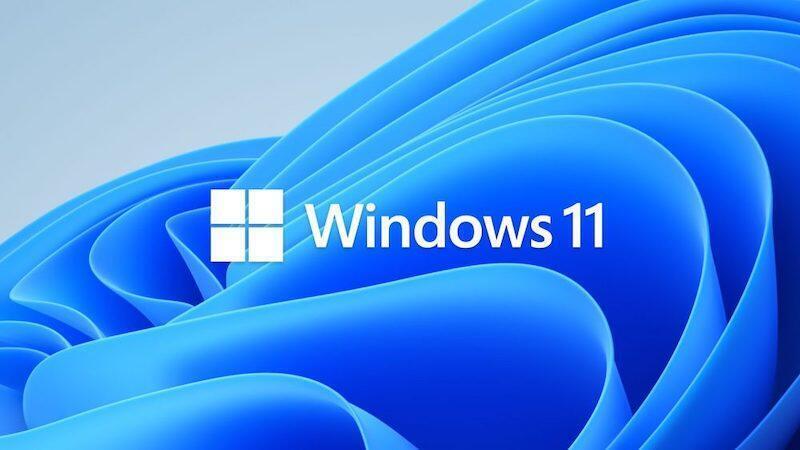
Image: Microsoft
Microsoft has taken the wraps off the next generation of Windows for anyone to see. Following its virtual launch event last Thursday, the company has released a preview edition of Windows 11 for Windows insiders. The preview version contains most of the items Microsoft touted at its launch event minus the integration with Microsoft Teams and the ability to install Android apps.
SEE: Windows 10 power tips: Secret shortcuts to your favorite settings (TechRepublic Premium)
The preview edition is naturally a work in progress. Based on internal testing as well as feedback from Windows insiders, Microsoft will tweak Windows 11 before the final version pops up later this year. But for now the initial insider edition gives us a good idea of Microsoft's direction in fashioning the successor to Windows 10.
Here's a brief glimpse of the new and changed features in Windows 11 based on the insider preview.
New design
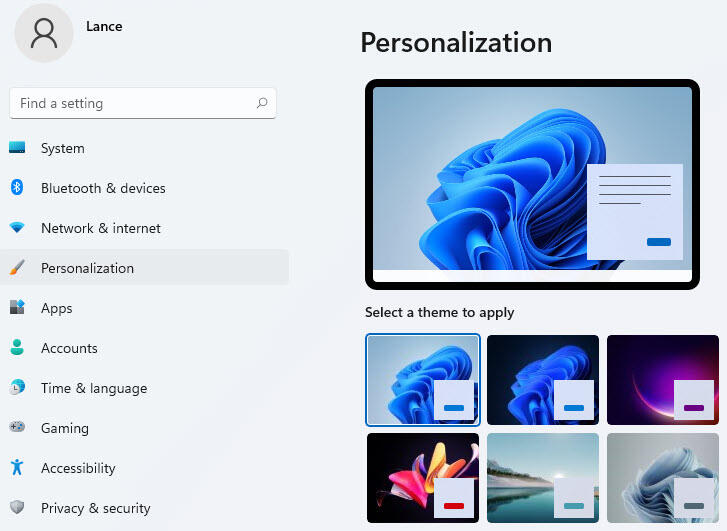
First off, Windows 11 kicks in a different aesthetic over Windows 10 courtesy of the new Fluent design. The square, boxy look of Windows 10 has been replaced by a more appealing rounded-corner appearance now found in the windows, menus and other screen elements. Icons and other aspects of the user interface sport a simpler and sleeker look. The visual look of an operating environment seems less critical than the overall reliability and performance. But a more pleasing aesthetic is certainly easier on the eyes as you stare at the screen most of the day.
Start menu
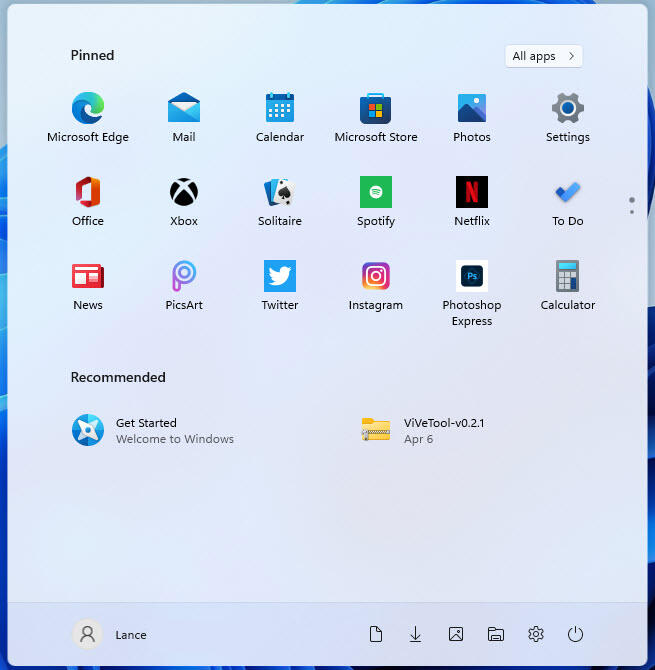
The Start menu has undergone a major revamp. Instead of displaying the familiar view of all your apps and tiles, the new Start menu shows only pinned and recommended apps. Venturing to all your installed apps requires an additional step. People who use only a few specific apps may like the change. But as someone used to a full Start menu where everything is quickly accessible, I'm not keen on it. Fortunately, a quick Registry tweak changes it back to the traditional Start menu.
You can also tweak the Start menu to determine which types of apps and which key Windows folders and locations appear on it.
Taskbar
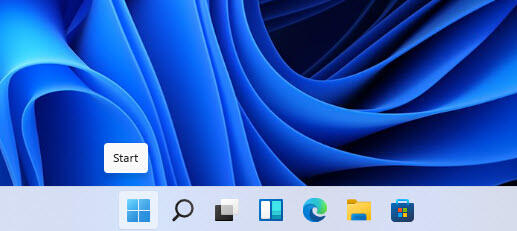
The Taskbar sports one big modification. Now it's center aligned rather than left aligned, with all the icons grouped together. That means the Start button is no longer by itself in the left corner of the screen. This is another change many people may not like, but you can easily enough move the Taskbar back to the left via an option in Taskbar settings.
Otherwise, though, you're limited in Taskbar customization. You can't move the taskbar to the top or side of the screen as in Windows 10. There's also no way to resize the taskbar or perform other tweaks that you can do in Windows 10.
Widgets
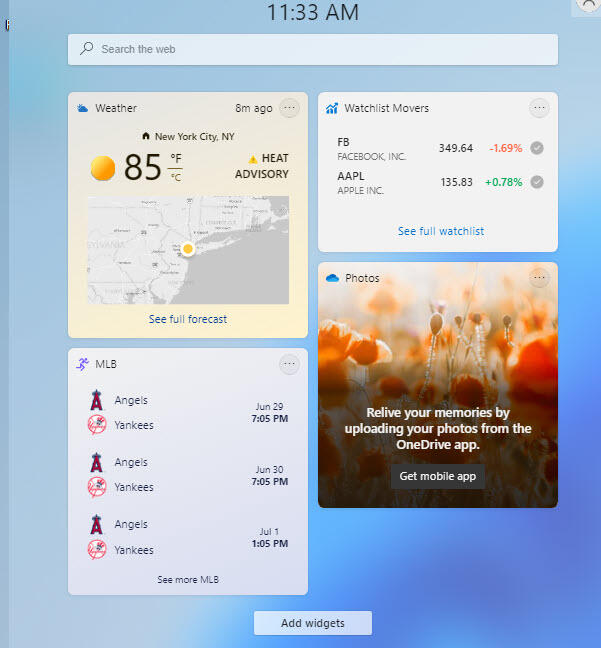
Windows 11 offers a widgets pane designed to display the latest news, weather, stock prices and more. Accessible from the Taskbar, the widgets can be customized and personalized to serve up the topics that most interest you. The widget panel is hidden and unobtrusive unless you click on a taskbar button to launch it. As such, it's a quick and convenient way to check on the latest news.
Virtual desktops
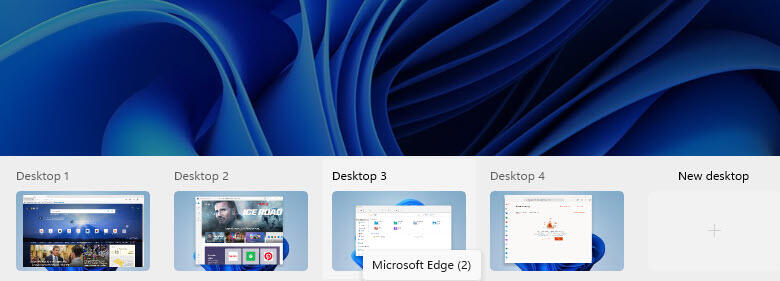
Launching a virtual desktop in Windows 11 is simpler than in Windows 10. A handy Taskbar button lets you easily create and switch among multiple desktops as a way to juggle different apps and files.
Snap layouts
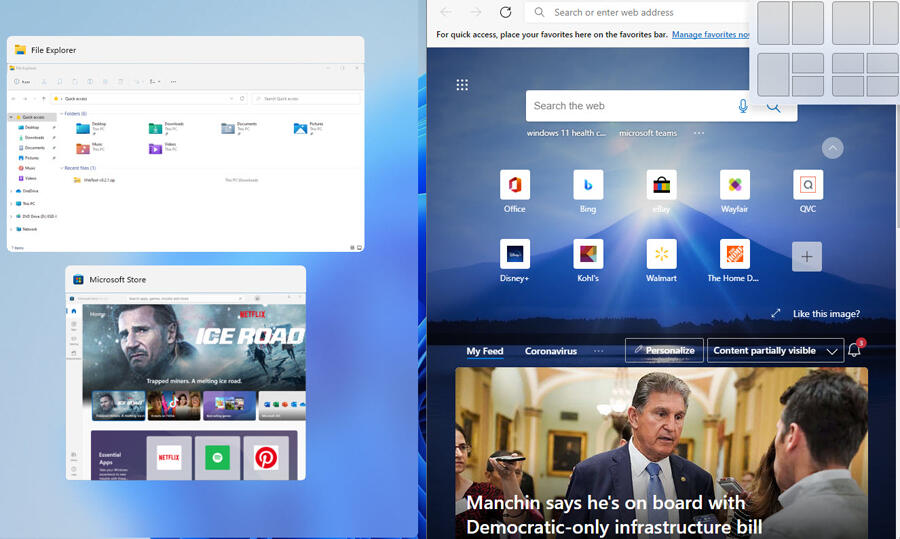
Windows 10 lets you snap windows to specific sides or areas of the screen to organize multiple apps. Windows 11 enhances this capability by helping you better control your snap layouts. You can preview a snap layout before you commit to it and more easily position your snapped windows. For anyone who likes to snap windows to organize their screen, this is a welcome improvement.
File Explorer
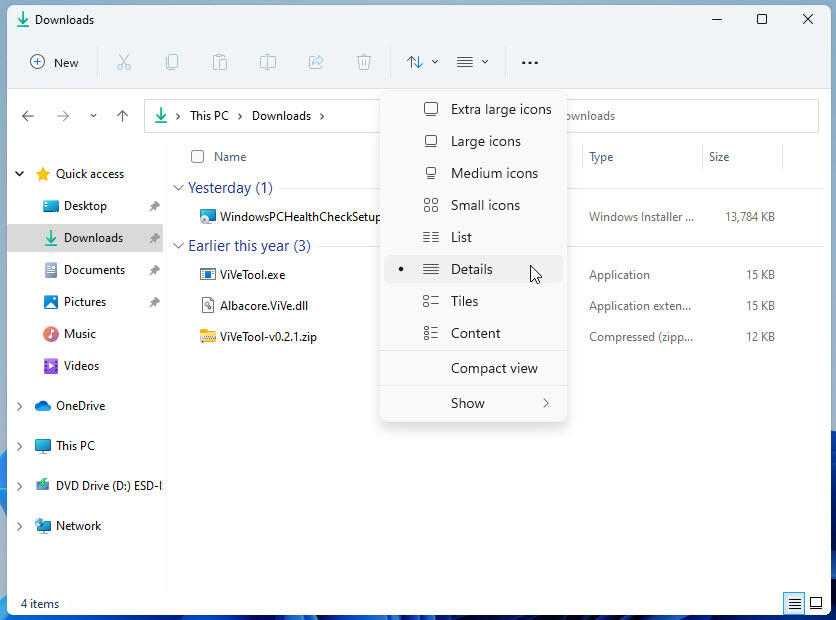
File Explorer works the same as always but it's been given a refresh. The new visual theme carries over with rounded corners and simpler icons. The ribbon has been replaced with a command bar, sporting smaller icons for all the key commands such as cut, copy, paste, rename, share and delete.
Microsoft Store
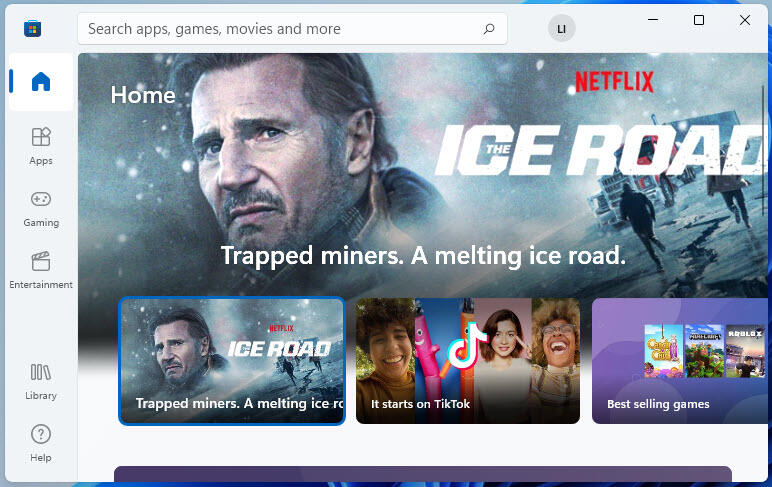
The Microsoft Store is now easier to navigate. The home page displays icons for the different sections, such as apps, gaming and entertainment. You can search across all the categories. A Library icon takes you to your own library where you can see which apps, games, movies and TV shows you've download, which ones are available for installation, and which ones can be updated.
A work in progress
As with any new software, Windows 11 will likely elicit a mixed reaction. People will undoubtedly like some changes and not others. At this point, however, Windows 11 is less customizable than Windows 10, a factor that may turn off many users. But again, this is a work in progress, and Microsoft has several months ahead to shape and mold the new OS based on the experiences and feedback of those of us willing to work with it.

Microsoft Weekly Newsletter
Be your company's Microsoft insider by reading these Windows and Office tips, tricks, and cheat sheets. Delivered Mondays and Wednesdays
Sign up todayAlso see
- Windows 10 security: A guide for business leaders (TechRepublic Premium)
- How to activate and use the built-in Windows 10 back-up feature (TechRepublic)
- How to increase shutdown speeds in Windows 10 (TechRepublic)
- How to optimize Windows 10 power settings for higher performance (TechRepublic)
- Windows 10 how to: A free tech support and troubleshooting guide (ZDNet)
- Get more must-read Microsoft tips and news (TechRepublic on Flipboard)







 English (US) ·
English (US) ·